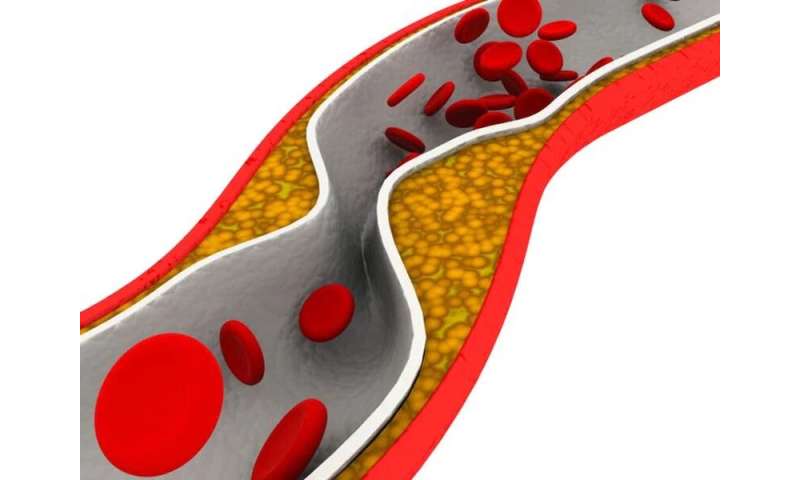PCI, CABG for left main CAD have similar five-year outcomes


(HealthDay)—Five-year rates of a composite outcome of death, stroke, and myocardial infarction are similar for patients with left main coronary artery disease following either percutaneous coronary intervention (PCI) or coronary artery bypass grafting (CABG), according to a study published online Sept. 28 in the New England Journal of Medicine. The research was published to coincide with Transcatheter Cardiovascular Therapeutics 2019, the annual meeting of the Cardiovascular Research Foundation, held from Sept. 25 to 29 in San Francisco.
Gregg W. Stone, M.D., from the Icahn School of Medicine at Mount Sinai in New York City, and colleagues randomly assigned 1,905 patients with left main coronary artery disease of low or intermediate anatomical complexity to undergo either PCI with fluoropolymer-based cobalt-chromium everolimus-eluting stents (PCI group; 948 patients) or CABG (CABG group; 957 patients).
The researchers found that at five years, a composite of death, stroke, or myocardial infarction occurred in 22.0 percent of the patients in the PCI group and in 19.2 percent of the patients in the CABG group (difference, 2.8 percentage points; 95 percent confidence interval [CI], −0.9 to 6.5; P = 0.13). All-cause death occurred more frequently in the PCI group than in the CABG group (13.0 versus 9.9 percent; difference, 3.1 percentage points; 95 percent CI, 0.2 to 6.1). The incidences of definite cardiovascular death (5.0 and 4.5 percent, respectively; difference, 0.5 percentage points; 95 percent CI, −1.4 to 2.5) and myocardial infarction (10.6 and 9.1 percent, respectively; difference, 1.4 percentage points; 95 percent CI, −1.3 to 4.2) were not significantly different between the groups. After PCI, all cerebrovascular events were less frequent versus after CABG (3.3 versus 5.2 percent; difference, −1.9 percentage points; 95 percent CI, −3.8 to 0), although the incidence of stroke did not significantly differ between the groups (2.9 versus 3.7 percent; difference, −0.8 percentage points; 95 percent CI, −2.4 to 0.9). After PCI, ischemia-driven revascularization was more frequent compared with after CABG (16.9 versus 10.0 percent; difference, 6.9 percentage points; 95 percent CI, 3.7 to 10.0).
“Ten-year or longer follow-up is required to characterize the very late safety profile of PCI and CABG as both stents and bypass grafts progressively fail over time,” Stone said in a statement.
Source: Read Full Article




